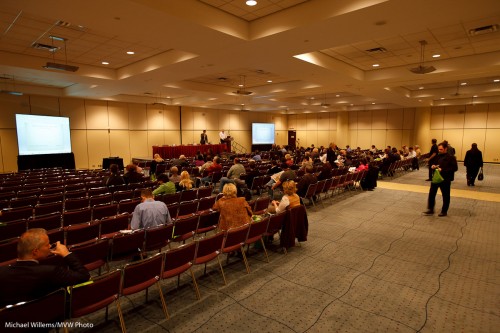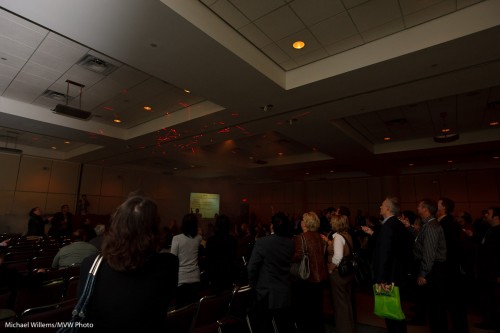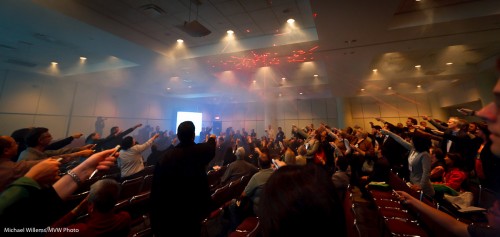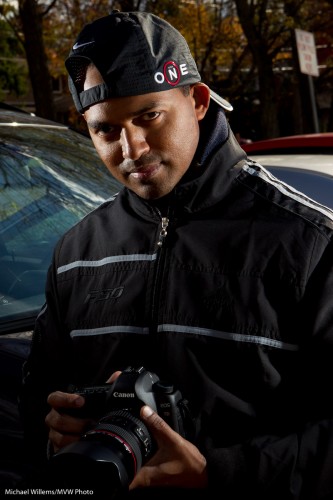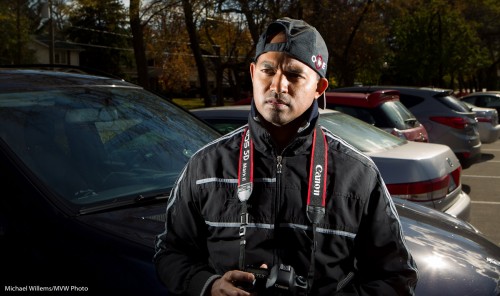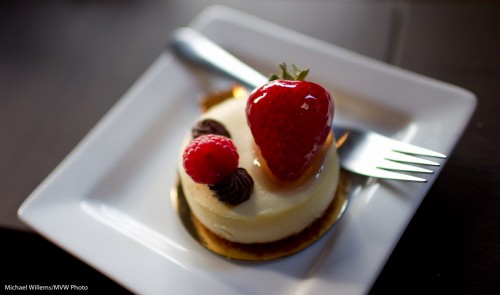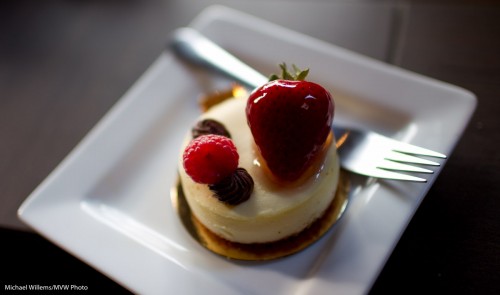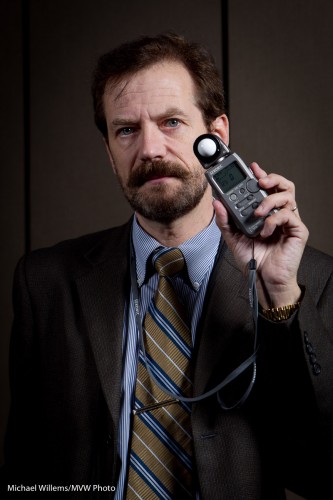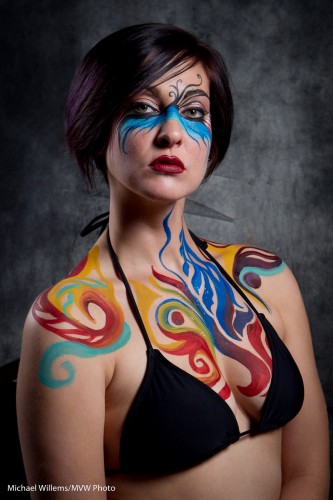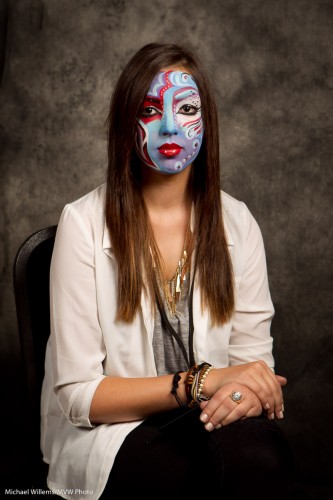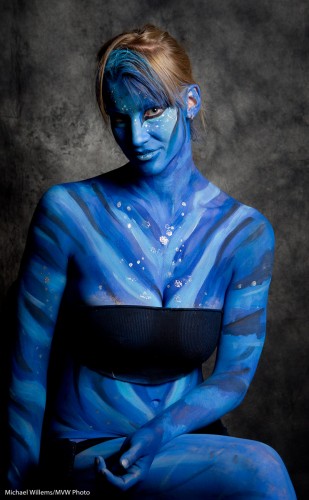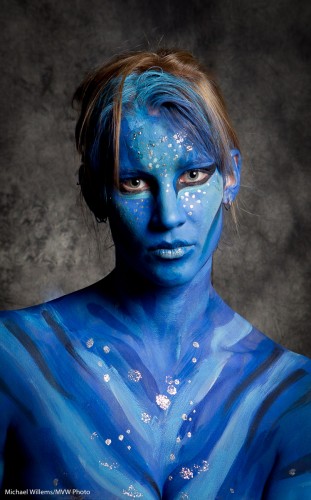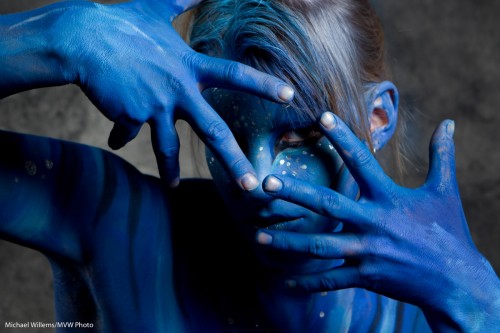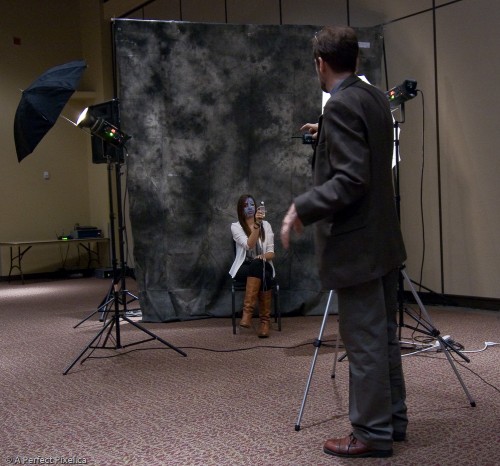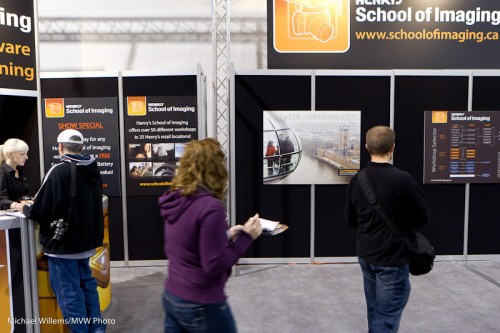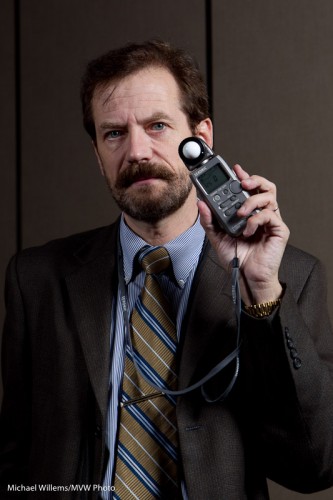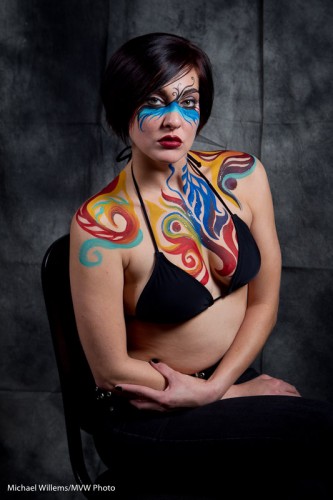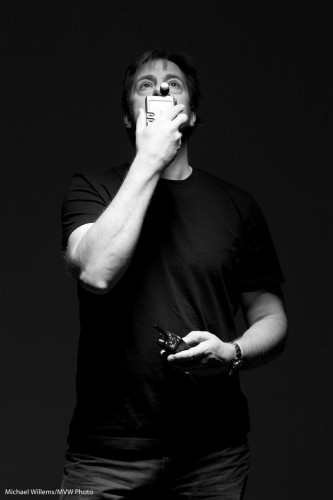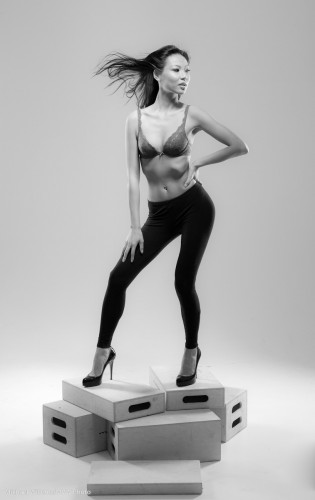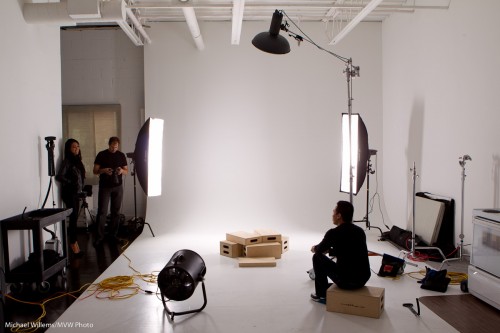Today was a good example of n event shoot.
Colleague Joseph and I got to the Metro Toronto Convention centre to shoot a few hundred accountants pointing laser pointers at the ceiling. A very un-accountant-like event!
So we set up ladders and camera with the light just right. We use a combination of ambient and gobo’d flash. Test shots of the room looked like this:
The event starts. And as the fog machine we had arranged starts and on command, the accountants’ laser pointers aim… unexpectedly, someone dims the lights to just about zero.
So we get this:
No time to say anything: we only have moments to shoot.
So I quickly had to:
- open up the lens to f/2.8,
- shoot at 1/15th second,
- at 800 ISO,
- I quickly set the flash to 1/16th power manual and bounced behind me (if I had had more time I would have gone up to 1/8th power),
- ….and then at home, push the exposure another stop!
In the end, this gives this:
Not too shabby eh? Ever seen such a fun group of accountants?
The moral of this post: you have to be quick on your feet and problem-solved instantly when someone is hiring you for a shoot. You cannot come home with excuses: need photos instead.
And it never hurts to shoot RAW.

